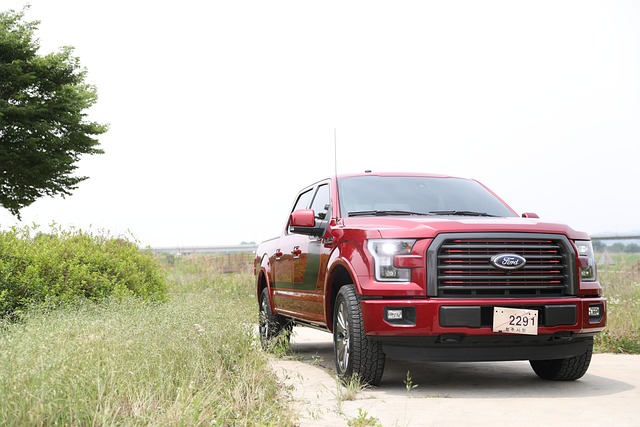Looking to register your car in California? It’s a straightforward process, but understanding the requirements is key. This guide will walk you through every step, from gathering essential documents for a successful DMV VIN verification to completing the registration application and paying fees. By following these clear instructions, you’ll be on your way to becoming a California vehicle owner in no time.
- Understand the Requirements for Car Registration in California
- Gather Necessary Documents for DMV Vin Verification
- Schedule and Visit Your Local California DMV Office
- Complete the Vehicle Registration Application Process
- Pay the Required Fees and Receive Your Registration Documents
Understand the Requirements for Car Registration in California

Before you begin the registration process, it’s crucial to understand the requirements for car registration in California. The California Department of Motor Vehicles (DMV) mandates several key steps, including a thorough vehicle inspection and verification of your car’s unique identification number (VIN). This VIN verification is an essential part of ensuring that your vehicle meets all safety standards before hitting the state’s roads.
A crucial element in this process is the mobile VIN inspection or vin inspection. This allows you to verify your car’s history and ensure it’s compliant with California’s regulations from the comfort of your own location. With a simple mobile vin verification service, you can streamline the registration process, making it more efficient and convenient for both new and existing vehicle owners.
Gather Necessary Documents for DMV Vin Verification

To register your car in California, you’ll need to go through a process known as DMV VIN verification. Before visiting the Department of Motor Vehicles (DMV), ensure you have all the necessary documents ready. This typically includes proof of ownership, such as a vehicle registration or bill of sale, and identification documents like a valid driver’s license or state-issued ID card. Additionally, you’ll need your vehicle’s Vehicle Identification Number (VIN) for accurate verification.
Among these, the VIN is particularly crucial. It serves as a unique identifier for your car, making it essential for various processes, including mobile VIN verification or inspection services. These services allow for remote checking of your vehicle’s history and condition, providing convenience and potentially saving you a trip to the DMV. Always double-check that all documents are up-to-date and accurate to ensure a smooth registration process.
Schedule and Visit Your Local California DMV Office

To register your car in California, start by scheduling a visit to your local Department of Motor Vehicles (DMV) office. The process involves several steps and documentation checks, so it’s advisable to set aside enough time to ensure a smooth experience. During your visit, you’ll need to present key documents like proof of ownership, vehicle identification number (VIN) verification, valid identification, and proof of insurance.
At the DMV, you’ll undergo a VIN inspection, which is crucial for verifying the vehicle’s history and ensuring it complies with California’s regulations. You can also opt for a mobile VIN verifier to streamline this process, as it allows you to complete the inspection quickly outside of traditional DMV hours. Once your car passes the inspection and all documents are in order, you’ll be on your way to registering your vehicle successfully.
Complete the Vehicle Registration Application Process

To complete the vehicle registration application process in California, you’ll need to gather a few essential documents and undergo a DMV VIN verification. Start by acquiring an odometer reading certificate, which attests to the current mileage of your car. Next, schedule or conduct a mobile VIN inspection to ensure the vehicle’s identity and history are accurate. This can often be done through third-party services that provide convenient and efficient mobile vin verification.
Once you have these in hand, fill out the Vehicle Registration Application (Form DV405) completely and accurately. Include all necessary fees, along with any additional documentation required by the California DMV. After submitting your application, allow sufficient time for processing, as delays may occur depending on various factors. This streamlined process ensures that your vehicle is legally registered and ready to hit the California roads.
Pay the Required Fees and Receive Your Registration Documents

After submitting your application for car registration at the DMV, the next step involves paying the necessary fees. These fees cover the cost of registering your vehicle and obtaining your registration documents. The California DMV charges a base fee for registration, which varies depending on your vehicle type and emissions status. Additionally, you might be required to pay for title transfer or other specific services if applicable. Once all fees are paid, the DMV will process your application and issue your registration materials.
These documents typically include your vehicle’s registration certificate and a new license plate (if issued). For added convenience, many California residents opt for a mobile vin inspection service. Using a tool like a mobile vin verifier, you can streamline the process by having your vehicle’s information verified remotely, ensuring that all paperwork is in order before heading to the DMV. This saves time and simplifies the registration experience.
Registering a car in California is a straightforward process once you understand the requirements. By gathering the necessary documents for DMV VIN verification, scheduling a visit to your local office, completing the registration application, and paying the required fees, you’ll be on your way to legalizing your vehicle. Remember, proper documentation and timely fee payment are crucial steps in ensuring a smooth car registration experience.
